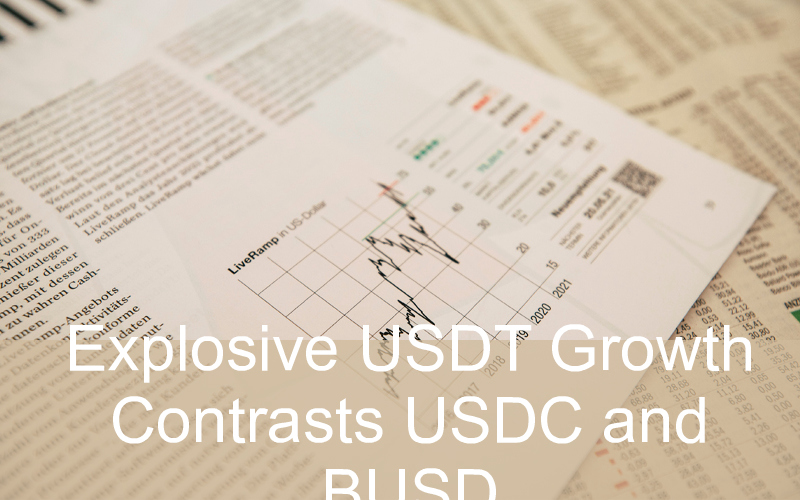Tether USD (USDT) is witnessing a huge market cap surge, while stablecoins USD Coin (USDC) and Binance USD (BUSD) have each recorded a record-breaking decline in their respective market capitalization. This surprising contrast has led to speculation as to what could be driving the movements of these digital tokens.
USDT's market cap crossed the $80 billion threshold for the first time since it dropped below the mark at the start of the Terra collapse in May 2022. Starting the year with a valuation of $65.36 billion, USDT has added $14.89 billion to its market cap in 2023. This increase puts USDT at the 11-month-high valuation of $80.25.
In contrast to this growth, USDC and BUSD are seeing considerable drops in their respective market capitalizations. USDC's market cap has dropped to an 18-month low of $32.59 billion, a decline that has gained steam since the beginning of March when it reached its high of $43.82 billion. This decline has been further exacerbated by the complications around Circle’s entanglement with Silicon Valley Bank and the subsequent depeg of USDC.
BUSD is also experiencing drastic drops in its market cap, with a 23-month low of $7.07 billion. This decline comes after a high point of $23.36 billion in November 2022. This sudden decline can be attributed to the New York State Department of Financial Services’ decision to stop Paxos, the issuer of BUSD, from minting new tokens, in addition to the US SEC's Wells Notice.
The juxtaposition of the rapid declines of USDC and BUSD with USDT’s impressive market cap growth poses some important questions in the current cryptosphere. What factors are driving investors away from USDC and BUSD? Could this be a sign of the increasing role of stablecoins in cryptocurrency? It will be interesting to see how these tokens recover from their losses and how their fluctuations impact the existing crypto landscape.
 Connor Jimenez
Connor Jimenez
- 2023-04-10
What's Driving USDT's Market Cap Surge?
USDT is seeing a huge market cap surge, while stablecoins USDC and BUSD have each witnessed remarkable downturns. This raises questions about the role of stablecoins in the current cryptocurrency market and what is driving investors away from USDC and BUSD.

